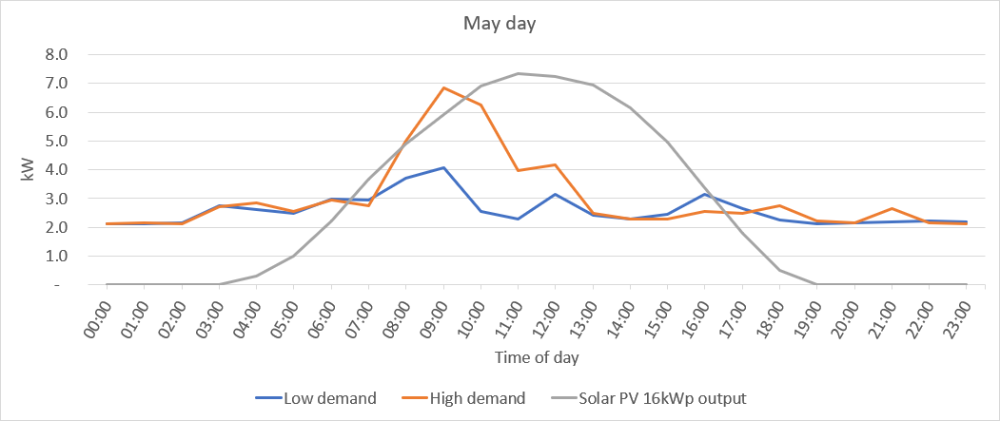AgroRES – Solar PV for the poultry sector
The value of Solar PV
Investing in Solar PV for renewable electricity has become an increasingly viable business option in recent years and months. This is for a number of reasons including:
- Increasing effectives of solar panels in converting daylight to electricity
- Increasing cost of electricity, making savings for on-site use of solar electricity more valuable
- Ability to sell excess solar electricity back to your supplier
- Improved support subsidies e.g. TAMS Solar Capital Investment Scheme
- Reduction of VAT on the installation of solar panels
For these reasons, any business with a high electricity demand should consider a Solar PV investment.
Energy efficiency measures should always be considered first to reduce electricity demand, e.g. LED lighting and more efficient equipment such as variable speed drive (VSD) pumps and fans. However, agricultural sectors such as poultry, pig and horticulture are generally well suited to Solar PV technology. Electricity demand in these sectors matches well with the electricity generated by a Solar PV system. In particular, cooling, refrigeration and ventilation energy demand increases during the summer months of May, June and July, when Solar PV output is at its highest. In many cases, overall food production volumes also increase during these months, which in turn increases energy demand further. In other words, these businesses are likely to use most of the solar electricity as it is generated and won’t need to invest in the additional cost of battery storage.
The Atlantic Technological University (ATU) and Northern & Western Regional Assembly (NWRA) are the Irish partners in the AgroRES project. ATU, in partnership with Teagasc, have worked with a number of poultry farms to assess specific Solar PV investments for their farms. While no investment should be entered into lightly, the results have been increasingly positive, indicating payback within 4 years even with modestly sized Solar PV systems in the region of 20kWp.
The graph below shows a high and low electricity demand for a 12,000 bird free range farm, with the Solar PV output for a day in May (generally the best solar electricity month of the year). Some export can be expected in high Solar output months, but the majority of the electricity will be consumed.

As part of the AgroRES project, ATU have developed simple guidance toolkits to help business in assessing the value of a Solar PV investment. The marketplace can be chaotic and difficult to navigate. Getting a clear quotation from Solar PV companies starts with knowing your own business and asking the right questions.
Below is an outline of the information to prepare and what to ask for in return.
Information to provide the Solar PV company:-
- Eircode of your farm – The Solar PV company can use this to view your site on web maps
- Electricity system and demand – Provide bills or list the kWh and cost for the last 12 months Confirm you Maximum Import Capacity (MIC, which is usually on your bill). This will assist the Solar PV company to advise on a system size that is suitable for the business.
- Photo of your electricity meter – This will inform the Solar PV on your existing electricity connection and system
- Optional extras – these include hot water diverter, battery, battery ready inverter (hybrid inverter) EV charger – Most Solar PV will be able to offer these options.
Information to ask the Solar PV company for:-
- Size of the Solar PV system in kWp – The kWp of the Solar PV system determines how much it will generate.
- Size of battery in kWh (if included) – The kWh capacity of the battery determines how much electricity it can store
- Annual Solar PV output in kWh with a graph showing output by month – These kWh are what you are really buying. You can use this to compare with your own consumption figures and to assess the value of the investment.
- Breakdown of system costs including optional extras, with VAT and grant amounts shown separately – For cost clarity. Components like inverters and battery will need to be replaced within 10 to 15 years, while the panels will work effectively for around 25 years or more.
NOTE: VAT on the supply and installation of Solar Panels was reduced to 0% in April 2023 - Triple E number for the components – Confirms the components meet minimum energy standards: See SEAI website for more information
The AgroRES Project is supported by INTERREG Europe
